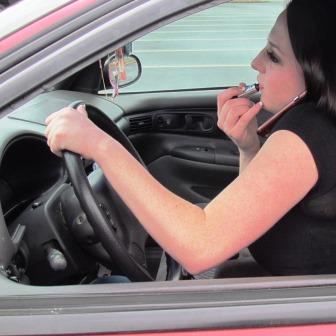
Before an accident drivers text, drive impaired, spill coffee and look down or do any one of a number of things other than pay full attention. The same federal agency that investigates plane crashes with the goal of preventing future aviation disasters also studies highway accidents.
Fatal motor vehicle accidents occurred at a slightly reduced rate in 2018. The National Highway Traffic Safety Administration – NHTSA – reports traffic fatalities saw a general downward trend over the last 40 years. But the 36,560 people killed on U.S. streets and highways in 2018 represented a 2.4% decrease from 2017.
At the same time pedestrian fatalities increased in 2018. The number of pedestrians killed on U.S. roads went up by 3.4% from 2017 to 2018. In fact more pedestrians died in traffic accidents in 2018 than in any year for almost 30 years, since 1990
Eighteen states including Massachusetts and New Hampshire bucked the trend with more traffic fatalities in 2018 over the previous year. New Hampshire’s fatal accident rate went up 44% during that time period. Massachusetts saw a 3.7% increase in fatal highway accidents.
Drunk driving accidents edged downward by 3.6% in the NHTSA fact sheet. At the same time, nationwide, over one-quarter or 29% of the total number of fatalities arose from alcohol impaired driving fatalities.
What are most cars doing just before an accident?
Drunk driving and distracted driving pose serious threats to highway safety. Almost everyone knows or should know that impaired driving and texting or otherwise not paying attention while driving represent top accident causes. Those realities cause serious car accidents every day.
But what mechanics take place in the seconds before an accident? For example, taking a left turn crossing one or more lanes of traffic requires heightened attention. But is that what drivers are actually doing before many accidents?
In a separate study the NHTSA found surprising results showing what cars were actually doing in the moments immediately before an accident:
- Going Straight 46%
- Negotiating a curve 21%
- Stopped in Traffic 16%
- Decelerating 4%
- Accident avoidance move 3%
- Changing lanes 2%
- Turning left 2%
- Accelerating in Traffic 1%
- Passing 1%
- Turning Right 1%
- All others 3%
So, taking a left turn requires key awareness. At the same time though, almost half, 46%, of all accidents happened after or while the driver was simply going straight forward. The second highest action before an accident was going around a curve. Turning left as a pre accident movement was way down the list at two per cent, barely edging out right turners at one percent.
What the law requires before an accident
Whether it is turning left or texting before a collision, liability arises when a driver fails the legal duty required of all. Some say “well, it was only an accident.” Rather, the law finds negligence when there is a breach of duty that causes harm.
In other words, traffic signals, rules of the road and the law all place a duty of “reasonable care” on all drivers. When drivers breach that duty, causing harm, negligence results. Those basic elements make up liability, or the law of negligence at its very basic level.
Understanding the events that take place before a motor vehicle crash provides insight. Researchers from the same agency that investigates plane crashes also look into the causes and conditions surrounding serious car accidents. They advocate technologies including electronic stability control, lane departure warning systems, brake assist systems and others. But a key factor in reducing the likelihood of highway accidents remains having drivers who understand their legal and common sense duty to drive reasonably.
After an accident
The author of this article is attorney Andrew D. Myers with offices in North Andover, MA and Derry, NH.
After sustaining injury in a car accident not your fault, you face a matrix of questions and forms from insurance companies. Any slightly “wrong” answer could spin your case in the wrong direction. If interested in maximizing your recovery seek legal representation quickly.
My office helps those injured in motor vehicle accidents avoid mistakes when dealing with insurance companies. They’re clearly looking out for their own interests, yours comes second.
If injured in a car accident that was not your fault, plan on maximizing the result. Call our office at one of the numbers at the top of this web page or click here for a FREE consultation with an experienced personal injury attorney. Your initial consultation is always free.
You only ever receive one settlement for your personal injury. Help us help you make it count that first and only time.
Model Credit: Courtney Babel
Sources:
2018 Fatal Motor Vehicle Crashes, Traffic Safety Facts, NHTSA, fact sheet, October, 2019.
National Motor Vehicle Crash Causation Survey, Report to Congress, NHTSA, July 2008.
This article focuses on what happens before an accident.
Here’s what to do:
After a car accident in New Hampshire.
After a car accident in Massachusetts.
Views: 19




